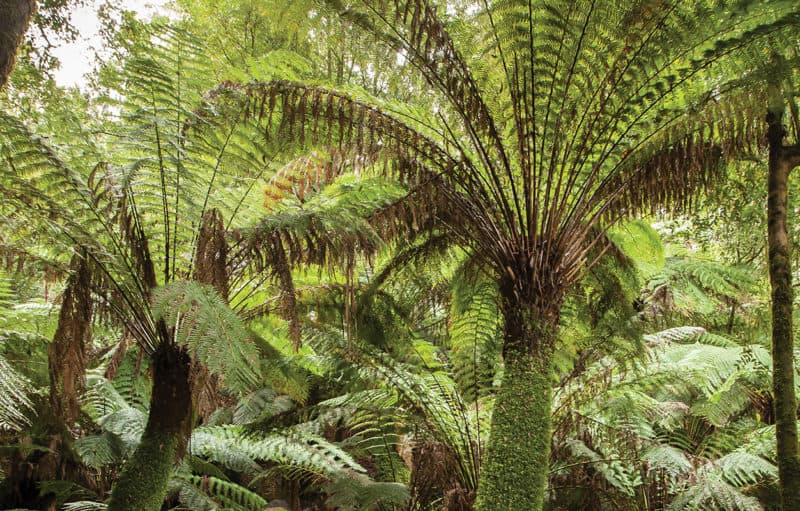PARK WATCH Article November 2022 |
Nature Conservation Campaigner Jordan Crook zooms in on one of our most mysterious and miniature marsupials.
If you’ve been part of our community for a while, you may have once sported a Feathertail Glider on your pack while walking the Alps, or carried one on a banner at a rally at Victorian Parliament, or perhaps you might recall them adorning the pages of one of our many publications. The Feathertail Glider was featured in VNPA’s logo for many years until 2012.
Our shared history with the Feathertail Glider continues with recent survey work done in the proposed Pyrenees National Park. The survey revealed the first ever records of the glider in this area – which is still open to logging even though it has been agreed to be a national park.
Little is known about this pint-sized creature – whose gliding is better described as a controlled fall from canopy to canopy – but what we do know is remarkable. Feathertail Gliders are the smallest gliding mammal in the world, growing to around 12 grams in weight and 16cm in length (including their tail). They’re found along the east coast of Australia from the tip of Cape York around to South Australia, but not Tasmania. They get around using their gliding membrane that stretches between their fore and hind limbs, carrying them for around 20 metres from tree to tree.
In recent times the Feathertail Glider Acrobates pygmaeus has been recognised as two distinct species: Narrow-toed Feathertail Glider Acrobates pygmaeus and the newly described Broad-toed Feathertail Glider Acrobates frontalis. Spoiler alert – the width of their toes is the main distinguishing factor between the two species.
The two species are part of the family Acrobatidae, which includes the Feather-tailed Possum Distoechurus pennatus endemic to New Guinea and shares the feather-like tail of stiff bristles that inspired its common name. Both species are listed as Least Concern on the IUCN Red List, but not in Victoria (though it has likely experienced localised extinctions due to habitat loss and fragmentation). It seems to be secure across much of Victoria and is historically absent from the Mallee region. The Narrow-toed Feathertail Glider is considered Endangered in South Australia.
Like many of our gliding marsupials, the Feathertail Glider relies on tree hollows for denning. Incredibly they prefer to nest in large groups, with between 20-30 individuals often squeezed into one hollow!
Luckily, due to their small size, they can access hollows sooner than larger critters who need to wait over a century for hollows large enough to nest in. They usually den or nest with large groups of gliders, sometimes up to 20 or 30 individuals in one hollow! But the ability to occupy small and inconspicuous hollows can come at a cost. It’s quite likely these are the types of modest hollow-bearing trees that are missed by contractors assessing trees for their logging. Left unidentified these habitat trees are more likely to be felled and logged – with Feathertails suffering the consequences.
So, keep an eye on the canopy because what looks like a falling piece of bark or leaf could be this tiny gliding marsupial feeding on flower blossoms, or maybe a dose of sap slurped from incisions made by Yellow-Bellied and Sugar Gliders.
Read more about this split in the two species in the article ‘Feathery-tale of a new species’ by Bertrham Lobert in the Strathbogie Ranges-Nature View.
References:
Harris, J. M. Acrobates pygmaeus (Diprotodontia: Acrobatidae). Mammalian Species. 47, 32-44 (2015).
Lobert, B. Feathery-tale of a new species. Strathbogie Ranges-Nature View (2020).
Image: Dan Pendavingh
Did you like reading this article? You can read the latest full edition of Park Watch magazine online.
Want to be kept up to date about this and other nature issues in Victoria? Subscribe to our email updates.
You can also receive our print magazine Park Watch four times a year by becoming a member. Find out more.
